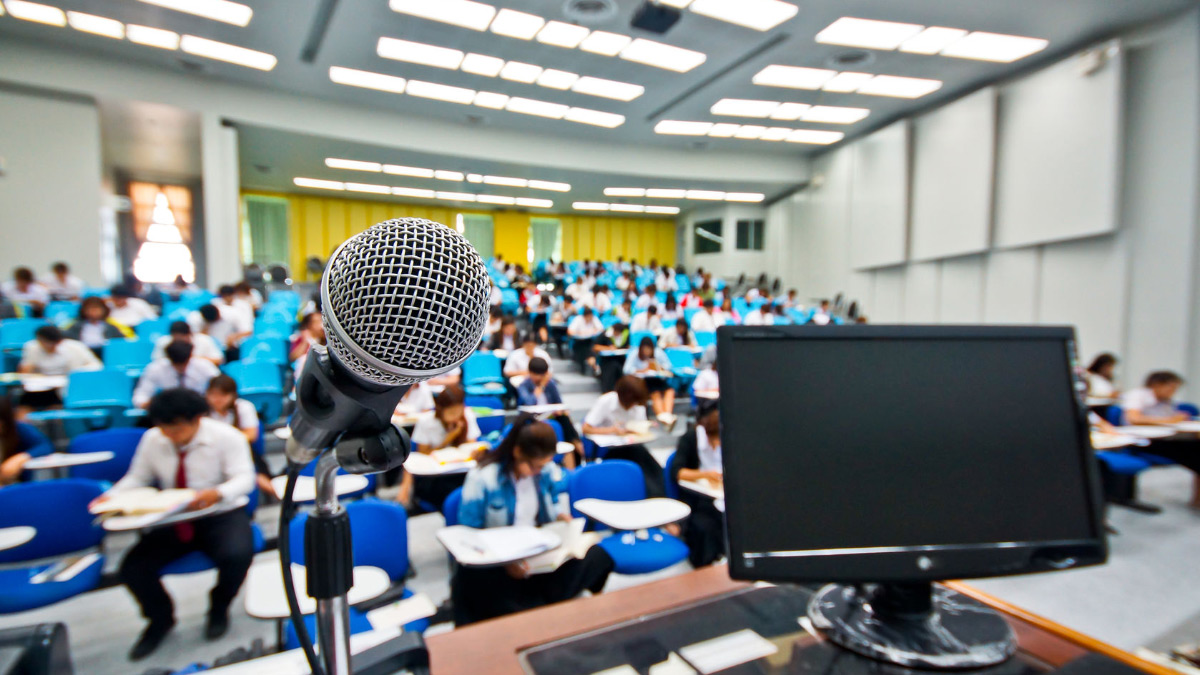Nearly 120 years ago the eccentric sociologist/economist Thorstein Veblen wrote his Theory of the Leisure Class. A strong case can be made that today, higher education is an academic leisure class—many students and professors working embarrassingly few hours a year. It is often argued America’s universities are inefficient, suggesting employees produce relatively little of value for each hour worked. There is some truth to that assertion, but there is the second problem: students and many employees don’t work very many hours. To be sure, there are many exceptions, and I know professors and some students who work long days, sometimes on weekends, researching, teaching, writing, and advising. At some schools, the teaching load is high (12-15 hours in class weekly, teaching four or five classes.)
But let me tell you about Thanksgiving week for me. I began the week with a little academic R and R, attending one of the regional economic association meetings, namely the annual Southern Economic Association conclave at an upscale hotel in Washington, D.C. The 240-page printed program listed about 2,000 academic papers to be presented. At the session I attended early Monday morning, 16 persons showed up, only six of whom were either not giving a paper or commenting on one. My university spent more than $1,000 to send me to this conference. We could have done the whole thing much cheaper through some video conferencing method. The meeting’s real purpose: allowing faculty to have fun partying with colleagues and demonstrate they have done some research which will help secure them promotion, tenure or a better job (or a first job for graduate students entering the labor market).
I returned home to teach a class the next day. A total of 13 of my 36 students showed up, the remainder heading home early for the Thanksgiving break. On Wednesday, November 22, almost no one was working in my department and Thursday was a national holiday. On Friday I found five cars in my often-full 150-car parking lot, and NO one working (other than me) in my department with its more than 25 offices. I learned we were celebrating, more than six weeks later than anyone else, Columbus Day. It will be worse at Christmas. The university will declare that the week of December 23 through 28 is a vacation “week,” which will actually extend into the next week (December 31 and January 1): in short, a paid vacation approaching 10 days. The students have it even better, having a break from December 13 or 14 (depending on when their final exams are over) to the beginning of the spring semester on January 14. Their year is done May 2 or 3, with, of course, a week “spring break” in the middle of the 3 and 1/2-month semester. Presumably exhausted from arduous work, students take off the entire months of May, June, July and most of August, as does most of the faculty.
In reality, federal data suggest the average student spends less than 30 hours weekly on academic work, for perhaps 30 weeks a year—less than 900 hours, fewer hours spent on schooling than when in the eighth grade. The typical faculty member is in class perhaps six to nine hours weekly for 30 weeks, or maybe 250 hours a year. Most professors are available during office hours and spend some time preparing for class, but the basic teaching function rarely absorbs more than 600 hours a year of time. Even if the professor spends another 600 hours on academic research and 100-200 hours on so-called service activities, the annual workload of 1,300-1,400 hours pales in comparison to the hours worked by other professionals—accountants, lawyers, doctors, etc.
In may even be worse than that. A student shared with me an email recently from one of his professors: “Sorry about missing class today. Got busy and forgot.” What will happen to that professor? Almost certainly, absolutely nothing.
Moreover, many of those relatively few work hours are used preparing papers to be read at meetings like the Southern Economic Association to a handful of colleagues. Diminishing returns long ago set in for much academic research. More generally, we are over-invested in higher education, continuing to use third-party financing (by governments, student loan providers and private philanthropy) to fund a highly inefficient system that horribly under-utilizes resources.













